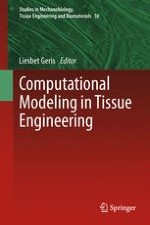
2013 | OriginalPaper | Buchkapitel
In Vivo, In Vitro, In Silico: Computational Tools for Product and Process Design in Tissue Engineering
verfasst von : Liesbet Geris
Erschienen in: Computational Modeling in Tissue Engineering
Verlag: Springer Berlin Heidelberg
Aktivieren Sie unsere intelligente Suche, um passende Fachinhalte oder Patente zu finden.
Wählen Sie Textabschnitte aus um mit Künstlicher Intelligenz passenden Patente zu finden. powered by
Markieren Sie Textabschnitte, um KI-gestützt weitere passende Inhalte zu finden. powered by